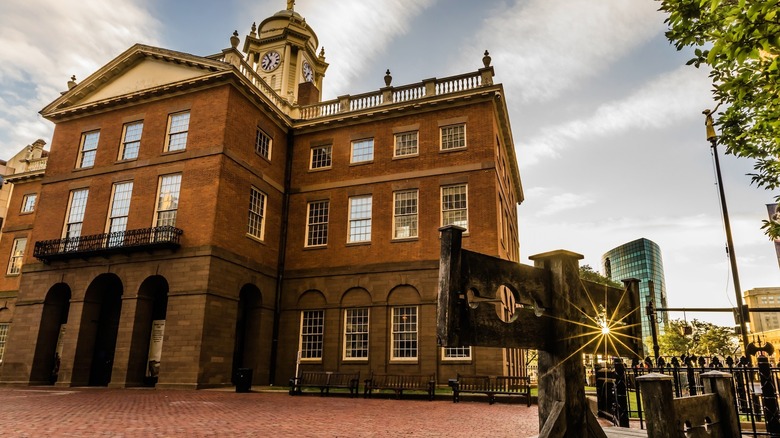Connecticut's Old State House Has An Eclectic Oddities Museum With An Artistic History
We may receive a commission on purchases made from links.
Long before museums became a regular feature of cities and towns, "curiosity cabinets" fulfilled the rich-and-powerful's proclivity for collecting. Under the influence of a 1565 treatise on collecting by Belgian physician Samuel Quiccheberg, princes and potentates sought to bring order to their universe, create a framework of knowledge, and perhaps show off a bit. This carried over to the newly born United States.
In 1797, Connecticut painter and avid collector, Reverend Joseph Steward opened a museum of "natural curiosities and paintings" on the third floor of the then new state house, making it one of the first museums in the nation. It grew quickly, forcing a move to a larger space in 1808. Not long after Steward's death, the collection was disbursed.
No doubt it would surprise and delight Steward that his cabinet of curiosities found new life more than 150 years later, when it was recreated as part of the four-year renovation of the Old State House in the 1990s. To do so, the building's executive director and museum's champion, Wilson H. Faude, had to rely on contemporary references and advertisements and solicit donations based on them. Private and public collectors responded with gusto, providing the museum with a plethora of items that featured in the original collection. This included portraits painted by Steward that originally hung in his museum. In 1997, exactly 200 years after it first did so, Steward's Museum of Natural and Other Curiosities opened to the public.
A curious collection
While the items and artifacts on display at the Museum of Natural and Other Curiosities span a wide range of genres, many are rooted in the "freak show" zeitgeist that typified 19th-century shows. Chief among these is the a two-headed calf, a centerpiece of the original museum. Remarkably, Faude found a stillborn one on a Michigan farm. The taxidermied animal was joined by a two-headed pig, an eight-foot-long alligator, a mummified hand, a collection of birds, hunter trophies, fist-sized bugs, preserved ocean creatures, and so much more. History is also on display at the museum, including portraits by Steward of American icons like George Washington, Benjamin Franklin, and William Penn.
The other floors of the Old State House offer more history worth checking out. The most significant is the courtroom, where the first trials of the slave revolt on the ship Amistad took place — later made into the 1997 Stephen Spielberg film, "Amistad." Placards and depictions in the room also tell the story. Displays in a museum of Hartford history include an antique fire engine, Mark Twain's bicycle, folk art, a LEGO replica of the Old State House, and various Connecticut ephemera. In the senate chamber, find an original portrait of George Washington by painter Gilbert Stuart. For more Connecticut quirk, head 37 miles south to one of the oldest inns in the United States or 20 miles west to America's oldest amusement park. Along the way, explore New Britain's Polish-influenced town.

